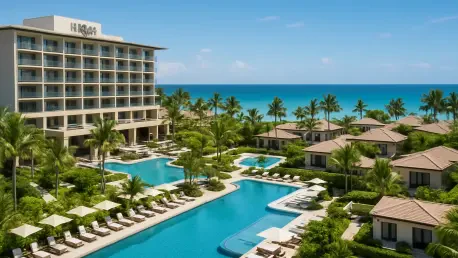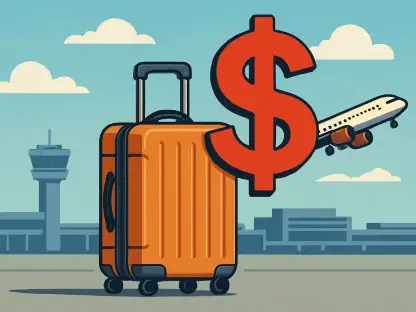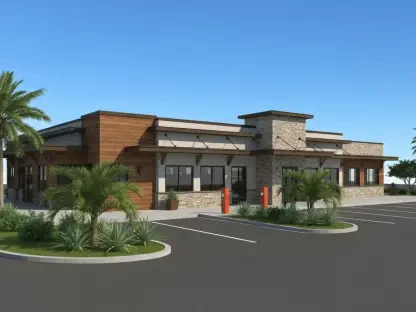I’m thrilled to sit down with Katarina Railko, a renowned expert in the hospitality industry with a wealth of experience in travel, tourism, and entertainment. With her deep insights into the evolving landscape of hotels and resorts, Katarina has become a trusted voice at expos and conferences worldwide. Today, we’re diving into Hyatt Hotels Corp.’s recent performance and strategic moves, exploring their bold acquisitions, financial trends, and ambitious growth plans. From the transformative Playa Hotels deal to their focus on an asset-light model, Katarina will help us unpack what these developments mean for Hyatt’s future and the broader hospitality sector.
Can you walk us through Hyatt’s recent acquisition of Playa Hotels & Resorts and what made this $2.6 billion deal such a significant move for them?
I’m happy to break this down. The acquisition of Playa Hotels & Resorts was a major step for Hyatt, signaling their intent to dominate the luxury all-inclusive resort space. Playa operates in prime destinations like Mexico, the Dominican Republic, and Jamaica, which are hotbeds for leisure travel. This deal wasn’t just about adding properties; it was about capturing a growing market segment where travelers are seeking high-end, hassle-free vacation experiences. Hyatt saw an opportunity to leverage Playa’s established portfolio and expertise to strengthen their foothold in a competitive niche.
How does acquiring Playa Hotels position Hyatt within the luxury all-inclusive resort market compared to their competitors?
This move really cements Hyatt’s leadership in the luxury all-inclusive segment. By bringing Playa’s properties under their umbrella, they’ve expanded their offerings in a space that’s seeing tremendous demand, especially post-pandemic as travelers prioritize unique, curated experiences. Unlike some competitors who are still building their presence in this market, Hyatt now has a robust network of resorts in key Caribbean and Latin American destinations, which gives them a significant edge in attracting high-spending leisure guests.
What’s the strategy behind selling Playa’s entire real estate portfolio for $2 billion to Tortuga Resorts so soon after the acquisition?
This decision ties directly into Hyatt’s broader vision of maintaining an asset-light business model. By offloading the real estate to Tortuga Resorts—a joint venture with strong financial backing—Hyatt frees up capital that would otherwise be tied to property ownership. Instead, they’re focusing on what they do best: managing and branding properties. This sale allows them to reduce financial risk while still retaining operational control over most of the resorts, which is a smart way to balance growth with fiscal prudence.
Speaking of control, how do the 50-year management agreements for 13 of the 15 Playa resorts play into Hyatt’s long-term goals?
Those long-term management agreements are a cornerstone of Hyatt’s strategy. They ensure that Hyatt can generate consistent, durable revenue through management fees without the burden of owning the underlying assets. Over a 50-year span, this creates a predictable income stream and allows Hyatt to focus on enhancing guest experiences and expanding their brand presence rather than worrying about real estate fluctuations. It’s a forward-thinking approach that aligns with their goal of sustainable growth.
Hyatt is using the proceeds from the real estate sale to repay a $1.7 billion term loan tied to the acquisition. Can you explain how this fits into their financial planning?
Absolutely. Using the proceeds to pay down the $1.7 billion delayed draw term loan is a disciplined financial move. It shows Hyatt’s commitment to managing debt levels post-acquisition, which is critical for maintaining investor confidence and financial flexibility. By quickly addressing this liability with the sale proceeds, they’re minimizing interest costs and keeping their balance sheet healthy, which is essential for funding future expansions or weathering any economic downturns.
Let’s touch on their financial performance. Hyatt reported a 1.6% increase in systemwide RevPAR for Q2. What do you see as the main drivers behind this growth?
The 1.6% RevPAR growth reflects a combination of factors. Primarily, it’s driven by strong performance in their luxury chain hotels, where demand for premium experiences continues to outpace other segments. Travelers are willing to spend more on upscale accommodations, especially in international markets recovering from travel restrictions. Additionally, strategic pricing and occupancy improvements in key regions have helped bolster this figure, even if the growth isn’t massive compared to previous quarters.
Why do you think luxury chain hotels outperformed select-service hotels in the U.S. during this period?
Luxury chain hotels are tapping into a segment of travelers who prioritize quality and unique experiences over cost. In the U.S., affluent guests and international visitors are driving demand for high-end properties with personalized services and amenities. On the other hand, select-service hotels, which cater to more budget-conscious or business travelers, are facing stiffer competition and softer demand, especially as corporate travel hasn’t fully rebounded to pre-pandemic levels. The disparity really comes down to differing customer priorities in these segments.
On that note, what’s behind the RevPAR decline in U.S. select-service hotels, and how is Hyatt responding to this challenge?
The decline in RevPAR for U.S. select-service hotels stems largely from weaker demand in secondary markets and among cost-sensitive travelers. There’s also an oversupply of mid-tier hotels in certain areas, which puts pressure on pricing. Hyatt is addressing this by focusing on operational efficiency, refining their marketing to target specific demographics, and exploring ways to enhance value through loyalty programs and partnerships. They’re also being selective about where they expand this segment to avoid further saturation.
Looking at their growth plans, Hyatt’s pipeline of management and franchise contracts grew to about 140,000 rooms. What’s fueling this impressive expansion?
Hyatt’s pipeline growth is a testament to their strong brand reputation and strategic focus on high-growth markets. The 8% increase reflects robust demand from developers and owners who want to partner with Hyatt for management or franchise deals. They’re also capitalizing on emerging destinations and trends like adaptive reuse with their new Unscripted by Hyatt brand. Plus, their asset-light approach makes them an attractive partner since they bring expertise without the heavy capital investment of property ownership.
Finally, what’s your forecast for Hyatt’s trajectory in the luxury and all-inclusive resort space over the next few years?
I’m quite optimistic about Hyatt’s future in the luxury and all-inclusive resort market. With the Playa acquisition and their focus on long-term management agreements, they’re well-positioned to capture a growing share of leisure travel demand. I expect them to continue refining their offerings, integrating technology for personalized guest experiences, and expanding into untapped destinations. If they maintain their asset-light strategy while balancing quality and scale, they could set a new benchmark for the industry in this segment over the next three to five years.









